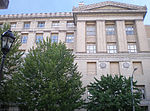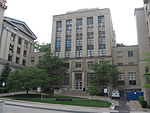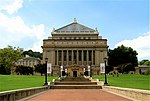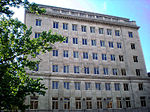Chevron Science Center
Buildings and structures completed in 1974Office buildings in PittsburghSkyscrapers in PennsylvaniaSkyscrapers in PittsburghUniversity and college laboratories in the United States ... and 1 more
University of Pittsburgh academic buildings

Chevron Science Center is a landmark academic building at 219 Parkman Avenue in Pittsburgh, Pennsylvania, United States on the campus of the University of Pittsburgh. The 15-story facility, completed in 1974, was designed by Kuhn, Newcomer & Valentour and houses the university's chemistry department. A three-story addition above Ashe Auditorium was completed in 2011.
Excerpt from the Wikipedia article Chevron Science Center (License: CC BY-SA 3.0, Authors, Images).Chevron Science Center
University Drive A, Pittsburgh
Geographical coordinates (GPS) Address External links Nearby Places Show on map
Geographical coordinates (GPS)
| Latitude | Longitude |
|---|---|
| N 40.445825 ° | E -79.957586 ° |
Address
Cheveron Science Center
University Drive A
15213 Pittsburgh
Pennsylvania, United States
Open on Google Maps










